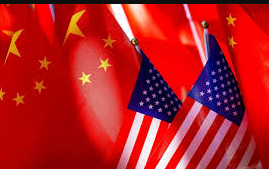In a significant move that has captured the attention of global markets and policymakers alike, China has recently announced restrictions on the export of certain minerals to the United States. This decision is grounded in a complex interplay of economic, geopolitical, and environmental factors, marking a pivotal moment in the ongoing trade tensions between the two nations. This article delves into the specifics of the ban, its motivations, potential ramifications, and the broader context of U.S.-China relations.
Understanding the Minerals in Question
The minerals targeted by China’s export restrictions primarily include rare earth elements and other critical materials essential for various industries, including technology, defense, and renewable energy. Rare earth elements (REEs) are a group of 17 chemically similar elements that play a crucial role in the manufacturing of high-tech devices such as smartphones, electric vehicles, and military equipment. The U.S. currently relies heavily on imports of these materials, with China being the dominant global supplier.The specific minerals affected by the ban may vary, but they typically encompass key resources such as:
- Neodymium: Used in powerful magnets for electric motors and wind turbines.
- Dysprosium: Essential for making magnets that can withstand high temperatures.
- Lanthanum: Used in catalysts for petroleum refining and in camera lenses.
- Gallium: Important for electronics and solar panels.
By restricting exports of these minerals, China aims to assert its control over a critical supply chain, further intensifying the competition between the world’s two largest economies.
Motivations Behind the Ban
The motivations for China’s decision to restrict mineral exports to the U.S. are multifaceted:
- Geopolitical Tensions: The U.S.-China relationship has become increasingly strained, with tensions rising over trade policies, national security concerns, and differing approaches to international governance. By imposing export restrictions, China is sending a clear message about its willingness to leverage its economic power in response to perceived aggression from the U.S.
- Supply Chain Security: China has expressed concerns about its own supply chain vulnerabilities. By limiting exports to the U.S., the Chinese government aims to bolster its domestic industries and ensure that critical resources remain available for its own technological and military advancements.
- Environmental Considerations: The extraction and processing of rare earth elements can have significant environmental impacts. By controlling the export of these materials, China can implement stricter regulations and standards, addressing environmental concerns while also exerting greater influence over global supply chains.
- Response to U.S. Policies: China’s export restrictions can also be viewed as a countermeasure to U.S. policies that have sought to reduce dependence on Chinese goods. The Biden administration has made efforts to promote domestic production of critical minerals, and China’s ban could be seen as a strategic move to impede those efforts.
Economic Implications
The export restrictions on minerals have profound implications for both the U.S. and global economies:
- Impact on U.S. Industries: Many American industries are heavily reliant on imported rare earth elements and other critical minerals. The ban could lead to supply shortages, increased production costs, and delays in manufacturing. Industries such as renewable energy, automotive, and high-tech could face significant disruptions, impacting their ability to innovate and compete globally.
- Global Market Dynamics: As China tightens its grip on the supply of critical minerals, other countries may feel compelled to reevaluate their own mining and export strategies. Nations rich in rare earth elements, such as Australia and Canada, could see increased demand for their resources as companies seek alternatives to Chinese supplies. This shift may lead to new partnerships and trade agreements, reshaping the global mineral market.
- Increased Prices: With reduced availability of critical minerals from China, prices are likely to rise. This could lead to inflationary pressures in sectors reliant on these materials, ultimately affecting consumers. Higher prices for electric vehicles, smartphones, and renewable energy technologies may hinder the transition to a greener economy.
- Innovation and Research: The U.S. may be prompted to accelerate its research and development efforts in alternative materials and technologies. This could lead to breakthroughs in material science and potentially reduce reliance on rare earth elements altogether. However, such advancements may take time and investment, leaving industries vulnerable in the short term.
Response from the U.S. Government
In response to China’s export restrictions, the U.S. government is likely to take several steps:
- Diversifying Supply Chains: The U.S. will likely intensify efforts to diversify its supply sources for critical minerals. This could involve pursuing domestic mining projects, fostering partnerships with allied nations, and investing in recycling initiatives to reclaim rare earth elements from existing products.
- Trade Negotiations: The U.S. may seek to engage in negotiations with China to address the underlying trade tensions. Diplomatic efforts could focus on finding common ground and reducing the likelihood of further retaliatory measures.
- Legislation and Policy Changes: The Biden administration has already proposed measures to bolster domestic production of critical minerals. This could involve implementing policies to streamline permitting processes for mining projects and providing incentives for companies to invest in U.S.-based operations.
- National Security Measures: The U.S. may classify the availability of critical minerals as a national security issue. This could lead to increased government involvement in securing supply chains and ensuring that key industries have access to the materials necessary for national defense.
The Broader Context of U.S.-China Relations
The export ban on minerals is not an isolated incident but rather part of a larger narrative of U.S.-China relations. Over the past few years, both countries have engaged in a tit-for-tat trade war, imposing tariffs and sanctions on each other’s goods. The rivalry extends beyond trade, encompassing technological competition, military posturing, and differing ideologies.
The U.S. has sought to counter China’s rising influence in various regions, particularly in Asia and Africa. As China invests heavily in infrastructure projects through its Belt and Road Initiative, the U.S. has aimed to strengthen alliances with countries that may feel vulnerable to China’s economic might.
In this context, the export restrictions on minerals serve as a reminder that economic interdependence can be fraught with tension. While both nations benefit from trade, their competing interests are leading to a reevaluation of the global economic order.
Conclusion
China’s decision to bar exports of certain minerals to the U.S. marks a significant escalation in the ongoing trade tensions between the two nations. The implications of this move extend beyond economics, touching on geopolitics, national security, and environmental considerations. As both countries navigate this complex landscape, the global market for critical minerals is likely to experience profound changes.
In the face of these challenges, the U.S. must adapt its strategies to secure access to essential resources while fostering innovation and sustainability. The interplay of economic power, technological advancement, and diplomatic relations will shape the future of U.S.-China relations for years to come. As the world watches these developments unfold, the stakes have never been higher, underscoring the importance of collaboration and dialogue in addressing shared global challenges.

Hello Friends, I am from India. After earning my Graduate degree in Computer Application, I decided to pursue my passion for Web Designing and Content Writing. My ultimate goal is to become one of the best in my field and continue to deliver high-quality content. Further, I aim to deliver the latest information regarding recruitment to job seekers, the latest news with accuracy, which shall benefit them in every way possible.

